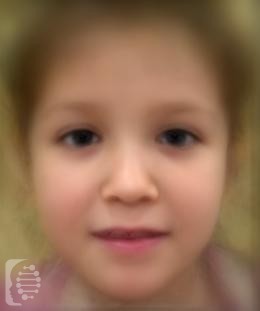What is Witteveen-Kolk syndrome?
Witteveen-Kolk syndrome is a rare neurodevelopmental disorder.
The syndrome is characterized by developmental delay and intellectual disability. As well as by unique facial characteristics and short stature.
The syndrome occurs in less than 1 in 1000000 people worldwide making it extremely rare. It affects males and females equally. Currently, just 40 individuals in the world have been diagnosed with the syndrome.
The syndrome is also known as 15q24 Microdeletion syndrome.
What gene change causes Witteveen-Kolk syndrome?
The syndrome is caused when a small piece of chromosome 15 is deleted in each cell. It follows an autosomal dominant pattern of inheritance. Some cases of the syndrome are new mutations.
In the case of autosomal dominant inheritance just one parent is the carrier of the gene mutation, and they have a 50% chance of passing it onto each of their children. Syndromes inherited in an autosomal dominant inheritance are caused by just one copy of the gene mutation.
In some cases, a genetic syndrome may be the result of a de-novo mutation and the first case in a family. In this case, this is a new gene mutation that occurs during the reproductive process.
What are the main symptoms of Witteveen-Kolk syndrome?
Global development delay and mild to severe intellectual disability, as well as delayed speech development, are common features of the syndrome.
Physical characteristics of the condition include a short stature, weak muscle tone and loose joints. Unique facial features include a small head, small hands and feets, abnormalities in the digits of the hands and feet, a full lower lip, long philtrum, high hairline, widely set eyes, broad eyebrows and a broad nasal bridge.
Possible clinical traits/features:
Autism, Attention deficit hyperactivity disorder, Polyhydramnios, Abnormality of the thorax, Abnormality of the voice, Abnormal palate morphology, Abnormality of the outer ear, Aggressive behavior, Anisocoria, Arachnodactyly, Aplasia/Hypoplasia affecting the eye, Camptodactyly of toe, Wide nose, Wide nasal bridge, Cafe-au-lait spot, Abnormal eyebrow morphology, Epicanthus, Deeply set eye, Everted lower lip vermilion, Small for gestational age, Downslanted palpebral fissures, Dysplastic corpus callosum, Smooth philtrum, Flared nostrils, Facial asymmetry, External ear malformation, Feeding difficulties in infancy, Finger syndactyly, Conspicuously happy disposition, Coarse hair, Malformation of the heart and great vessels, Congenital diaphragmatic hernia, Cupped ear, Cryptorchidism, Displacement of the urethral meatus, Brachydactyly, Developmental regression, Deep plantar creases, Microcephaly, Thick lower lip vermilion, Short palm, Radial deviation of finger, Proximal placement of thumb.
How is it diagnosed?
To find out if someone has a diagnosis of Witteveen-Kolk syndrome, it is important to have a consultation and evaluation with a clinical genetic specialist. Specialists may also suggest specific genetic testing or other types of tests to help reach a diagnosis. FDNA’s AI technology can help speed up the diagnostic process by analyzing facial features and other health information.


